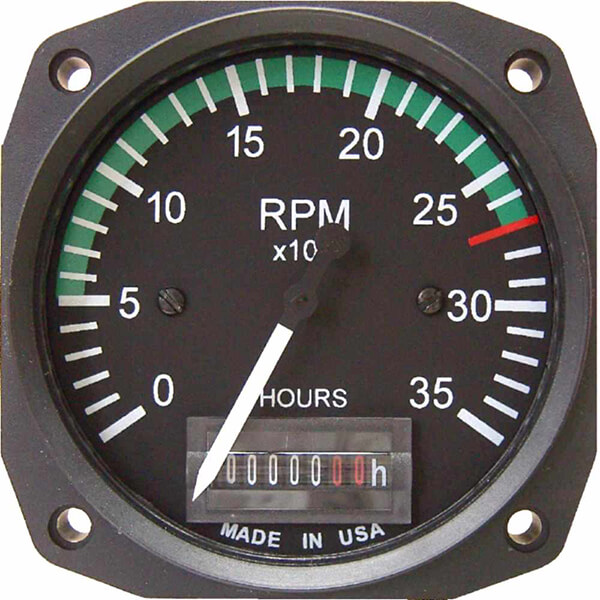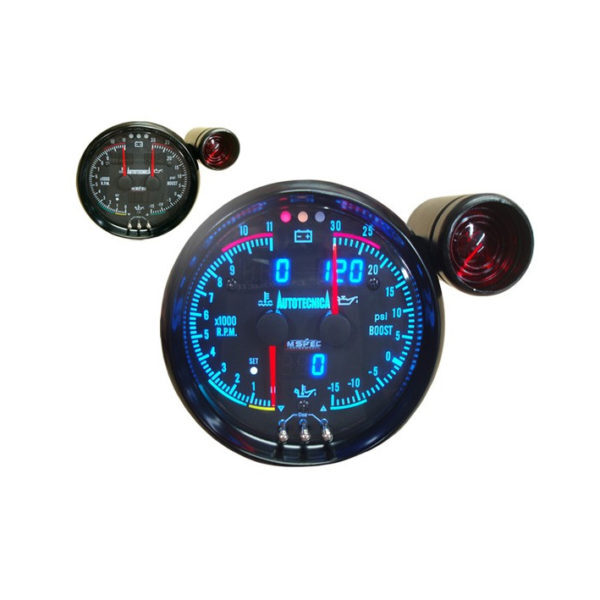Tachometer Acquiring Guide: Attributes to Try To Find and Best Brand names
Tachometer Acquiring Guide: Attributes to Try To Find and Best Brand names
Blog Article
The Value of a Tachometer in Checking Engine Rate and Efficiency in Automotive Applications
In the world of auto engineering, the tachometer stands as an essential tool in the driver's arsenal, supplying a straight home window right into the internal workings of an automobile's engine. Past its feature as a plain gauge of revolutions per minute (RPM), the tachometer serves as a crucial tool for enthusiasts and professionals alike, providing real-time insights into engine performance and wellness.
Relevance of Monitoring Engine RPM
Monitoring engine RPM, or revolutions per minute, is a critical aspect of automotive maintenance and performance assessment. Engine RPM directly correlates with the rate at which the engine's crankshaft revolves, suggesting exactly how promptly the engine is running - tachometer. By monitoring RPM, technicians can examine the health and wellness of the engine, find prospective problems, and fine-tune performance. An unusual RPM reading may signify issues such as engine misfires, malfunctioning spark plugs, or issues with the fuel delivery system. Regularly high RPM readings can show hostile driving routines or the requirement for a higher equipment change to improve gas effectiveness.
In addition, keeping an eye on engine RPM is important for efficiency evaluation in auto racing and high-performance cars. Maintaining optimal RPM levels is crucial for attaining peak power outcome and velocity. Racers frequently utilize tachometers to guarantee they are operating within the perfect RPM array for maximum efficiency. In recap, keeping track of engine RPM is not just important for identifying issues yet additionally for maximizing engine performance in numerous vehicle applications.

Benefits of Real-Time Data
In vehicle applications, real-time information plays a critical function in supplying instantaneous insights right into the performance and condition of the automobile. By continually keeping track of numerous parameters such as engine speed, temperature, gas intake, and more, real-time data offers numerous benefits that contribute to enhanced efficiency and safety and security when driving.
One significant advantage of real-time information is its capability to sharp drivers and technicians to any abnormalities or concerns without delay. This positive technique allows quick identification of potential troubles, enabling prompt interventions to stop further damages or malfunctions. Furthermore, real-time data facilitates efficiency optimization by offering immediate responses on driving routines and engine effectiveness. Chauffeurs can adjust their actions in real-time based on this information to attain much better fuel economy and prolong the life-span of their automobile.

Furthermore, real-time information plays a vital duty in modern vehicle diagnostics, enabling service technicians to rapidly identify and address malfunctions. This brings about reduced downtime, reduced upkeep costs, and eventually, improved overall automobile integrity and longevity (tachometer). By harnessing the power of real-time information, auto stakeholders can make enlightened choices that positively impact both the efficiency and longevity image source of the vehicle
Influence On Equipment Shifts
The tachometer plays a critical duty in optimizing gear changes by giving real-time engine rate data to the driver. When coming close to the redline on the tachometer, it signals the chauffeur to upshift to stop over-revving the engine and creating prospective damages.
Additionally, the tachometer aids in achieving smoother gear changes, particularly in manual transmissions. By keeping track of engine speed, drivers can execute equipment changes at the ideal RPM range, reducing snagging activities and lessening wear on the transmission have a peek here components. This accuracy in equipment modifications not only improves driving comfort but additionally adds to fuel efficiency.
Enhancing Gas Effectiveness
Given the crucial role the tachometer plays in maximizing gear changes for performance and engine health, it straight adds to maximizing gas efficiency in auto applications. By supplying real-time feedback on engine rate, the tachometer helps drivers in maintaining one of the most effective RPM array for fuel economy. When motorists regularly check the tachometer and change their driving behaviors appropriately, they can stay clear of unnecessary gas consumption created by over-revving or lugging the engine.
In addition, the tachometer aids vehicle drivers identify the most fuel-efficient gear to be in at any given moment, protecting against the engine from working tougher than necessary. In final thought, the tachometer offers as a useful device in boosting gas performance by promoting optimum driving behaviors and determining areas for enhancement in the lorry's performance.

Making The Most Of Engine Long Life
The tachometer's duty in keeping an eye on engine rate and performance contributes in making sure the durability of automobile engines. By making use of the tachometer successfully, drivers can optimize engine durability via conscious RPM administration. Constantly revving an engine expensive can result in extreme deterioration on critical elements, such as the pistons, shutoffs, and bearings. Over time, this can cause reduced engine efficiency and possible malfunctions. Keeping track of the tachometer allows drivers to remain within the advised RPM variety for their vehicle, avoiding unneeded pressure on the engine and extending its lifespan.

Conclusion
In final thought, the tachometer plays an important function in monitoring engine rate and efficiency in automotive applications. By providing real-time information on RPM, it allows for effective gear shifts, boosted fuel effectiveness, and taken full advantage of engine longevity. This device is important for maintaining optimum engine efficiency and guaranteeing the overall capability of an automobile.
Report this page